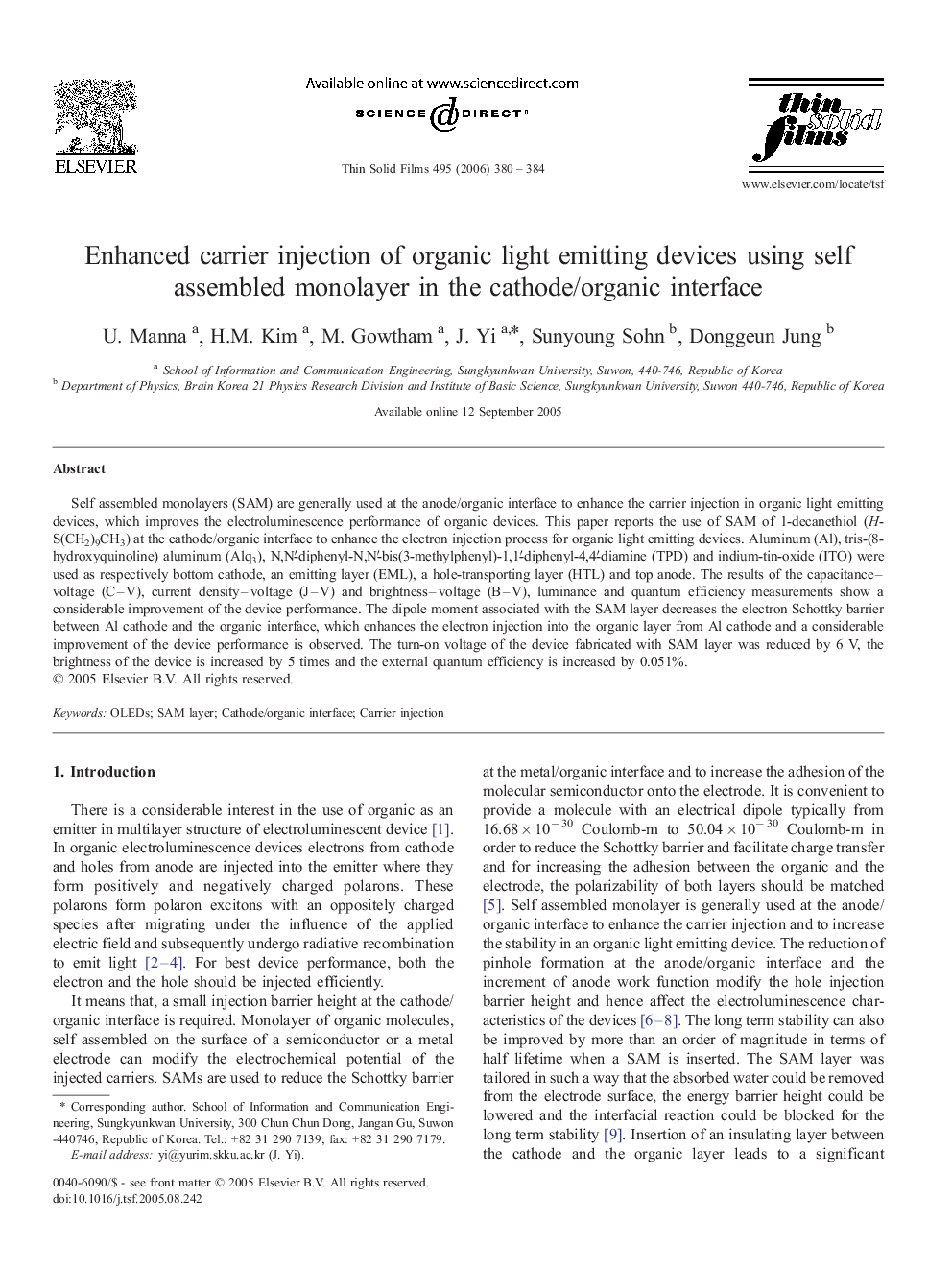| Article ID | Journal | Published Year | Pages | File Type |
|---|---|---|---|---|
| 1676825 | Thin Solid Films | 2006 | 5 Pages |
Self assembled monolayers (SAM) are generally used at the anode/organic interface to enhance the carrier injection in organic light emitting devices, which improves the electroluminescence performance of organic devices. This paper reports the use of SAM of 1-decanethiol (H-S(CH2)9CH3) at the cathode/organic interface to enhance the electron injection process for organic light emitting devices. Aluminum (Al), tris-(8-hydroxyquinoline) aluminum (Alq3), N,N′-diphenyl-N,N′-bis(3-methylphenyl)-1,1′-diphenyl-4,4′-diamine (TPD) and indium-tin-oxide (ITO) were used as respectively bottom cathode, an emitting layer (EML), a hole-transporting layer (HTL) and top anode. The results of the capacitance–voltage (C–V), current density–voltage (J–V) and brightness–voltage (B–V), luminance and quantum efficiency measurements show a considerable improvement of the device performance. The dipole moment associated with the SAM layer decreases the electron Schottky barrier between Al cathode and the organic interface, which enhances the electron injection into the organic layer from Al cathode and a considerable improvement of the device performance is observed. The turn-on voltage of the device fabricated with SAM layer was reduced by 6 V, the brightness of the device is increased by 5 times and the external quantum efficiency is increased by 0.051%.
